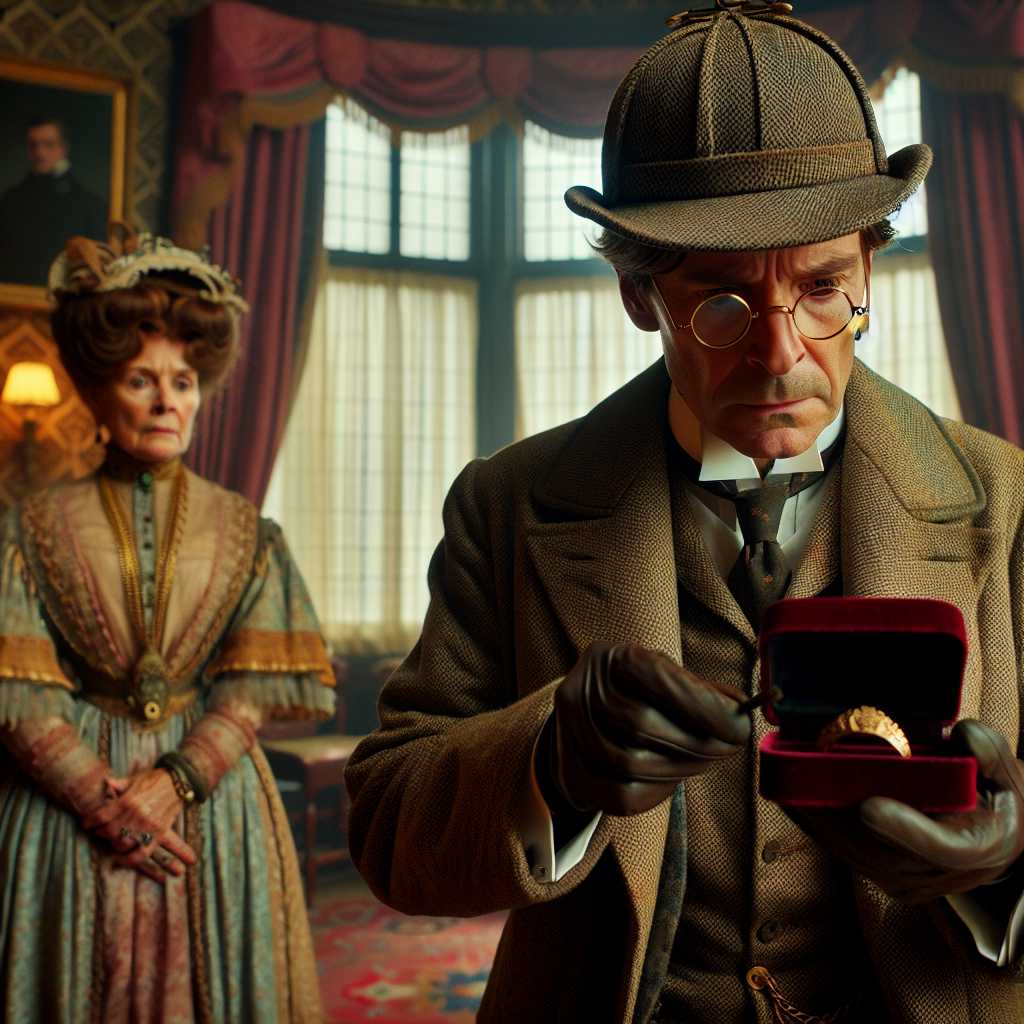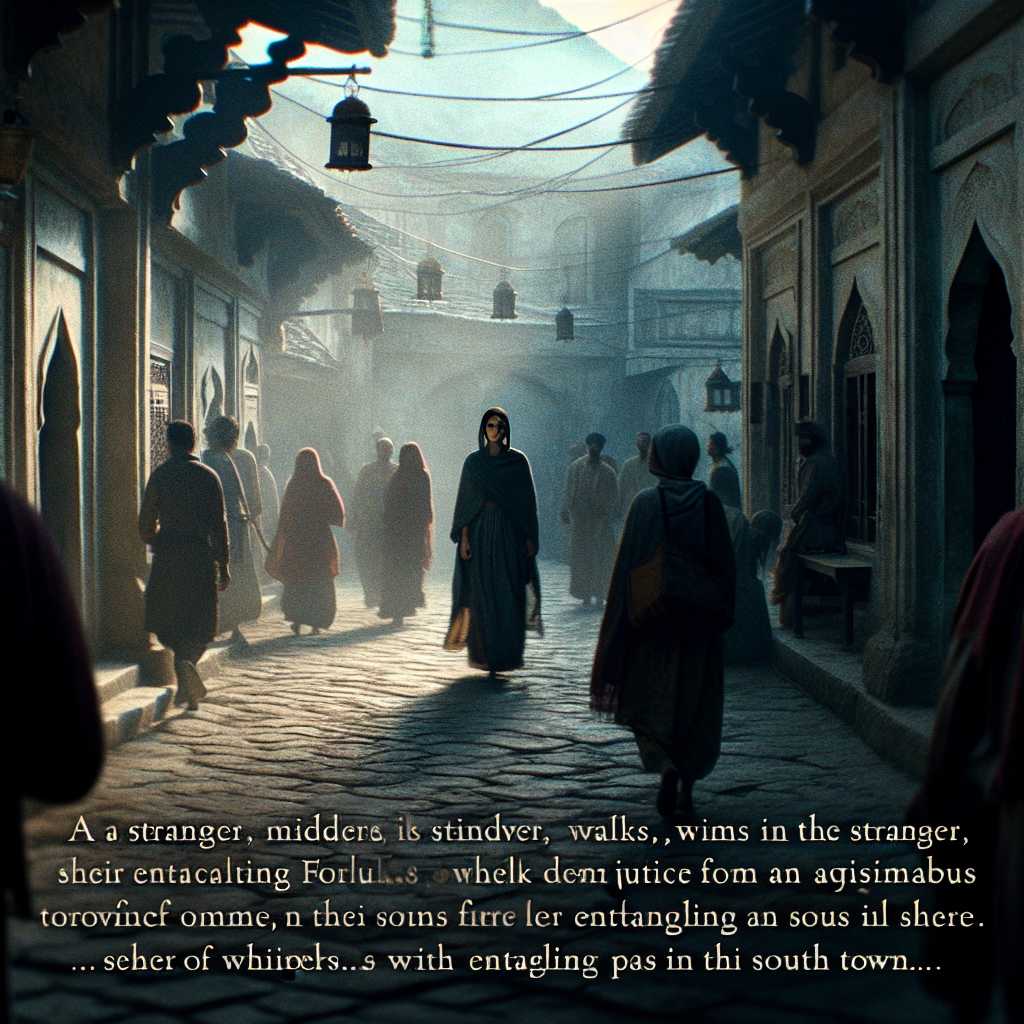
On a foggy evening in Victorian London, the tightly packed streets echoed with the sounds of horse-drawn carriages and the distant clang of church bells. It was an evening much like any other, save for the peculiar tension that hung in the air. At the center of this particular drama was Lady Clara Marlborough, a woman of extraordinary grace and wealth, who had recently found herself at the heart of a most perplexing mystery.
Lady Clara's prized possession, a bracelet gifted to her by her late husband, had vanished into thin air. This was no ordinary bracelet; it was an exquisite piece adorned with diamonds and sapphires, a treasure worth a small fortune. The theft had occurred during one of Lady Clara's renowned soirées, an event that had attracted London's elite.
It was in this atmosphere of uncertainty and whispers that our protagonist, the esteemed detective Mr. Simon Hawthorne, made his entrance. Mr. Hawthorne was not your typical detective. He didn't rely on brute force or intimidation, but rather on his sharp intellect and unparalleled powers of observation.
Arriving at the Marlborough estate, Mr. Hawthorne was greeted by Lady Clara herself. She was a vision of elegance, despite the distress that clouded her normally serene demeanor. She led him to the grand drawing room, where the theft had taken place, and began recounting the events of that fateful evening.
"It was during the third dance," she explained, her voice tremulous. "I had the bracelet on my wrist, and then, without warning, it was gone."
Mr. Hawthorne listened intently, his eyes scanning the room with practiced precision. The guests had left by now, leaving only Lady Clara, her devoted maid, Miss Eliza, and the butler, Mr. Jameson. Each had a potential motive, but nothing concrete.
In the days that followed, Mr. Hawthorne immersed himself in the case, meticulously sifting through clues and interviewing each of the three remaining individuals.
The maid, Miss Eliza, was the first to be questioned. She was a young woman with a strong sense of loyalty to Lady Clara.
"Miss Eliza, how well do you know Lady Clara?" Mr. Hawthorne queried.
"I have served her for three years, sir. She has always been kind to me," she replied.
"Did you notice anything unusual during the soirée?" Mr. Hawthorne pressed.
"Nothing out of the ordinary, sir. Though, I did see Mr. Jameson lingering near the jewelry box later in the evening," she said hesitantly.
Next, Mr. Hawthorne turned his attention to Mr. Jameson, the butler. He was an older man, his stoic demeanor betraying little emotion.
"Mr. Jameson, you have served Lady Clara for many years, have you not?" Mr. Hawthorne inquired.
"Indeed, sir, for nearly two decades," he responded.
"Can you account for your whereabouts during the soirée?" the detective asked.
"I was attending to the guests and ensuring everything was in order. I did approach the jewelry box, but only to secure it when I noticed it ajar," Mr. Jameson explained.
With both the maid and the butler under suspicion, Mr. Hawthorne knew he must delve deeper. He decided to examine the scene of the crime once more, hoping to uncover any overlooked details. It was during this thorough inspection that he found a delicate silk thread, almost invisible to the naked eye, lodged in a tiny crack of the ornate wooden frame of the jewelry box.
The significance of this discovery was not immediately clear, but Mr. Hawthorne filed it away in his mind as he continued his investigation. His next step took him to the local jeweler, a man who had serviced Lady Clara’s exquisite collection for many years. Here, he gleaned a crucial piece of information.
The jeweler revealed that a man fitting Mr. Jameson's description had inquired about the value of a bracelet matching Lady Clara's just weeks before the theft. This new detail cast a sharper light on the butler's possible involvement.
Returning to the estate, Mr. Hawthorne confronted Mr. Jameson. He presented the newfound evidence and watched as a shadow of doubt crossed the butler's face.
"Mr. Jameson, it seems you have questions to answer."
The butler's calm facade crumbled, and he confessed to a desperate gamble to secure funds for a family member in dire financial straits. Yet, the bracelet was still missing.
Determined to recover the stolen item, Mr. Hawthorne orchestrated a plan. He invited the jeweler to Lady Clara’s estate under the pretense of appraising her collection. Unbeknownst to the true thief, the jeweler was instructed to subtly reference a new, foolproof security system he had recently installed in the jewelry box -- a bluff, of course.
The true thief, now under growing pressure and thinking they could be imminently exposed, made a critical error. Under the cover of night, Miss Eliza, revealed to be the actual thief, attempted to retrieve the hidden bracelet from a secret compartment she had ingeniously placed within Lady Clara's room.
Mr. Hawthorne, along with Lady Clara and Mr. Jameson, who had been granted leniency for his earlier confession, lay in wait. Miss Eliza's apprehension was swift, her guilt undeniable.
Lady Clara's bracelet was recovered, and Miss Eliza's fate was sealed. As the first light of dawn pierced through the foggy London streets, Mr. Hawthorne departed, his mission successfully completed.
The tale of "The Mystery of the Elegant Bracelet" soon spread through London, cementing Mr. Simon Hawthorne's reputation as a detective of unmatched acumen. The streets returned to their bustling routine, the tension dissipating like the morning fog. In the hearts and minds of those who heard the tale, however, the story lived on, a testament to the brilliance and dedication of the man who had brought light to the darkest corners of their world.










